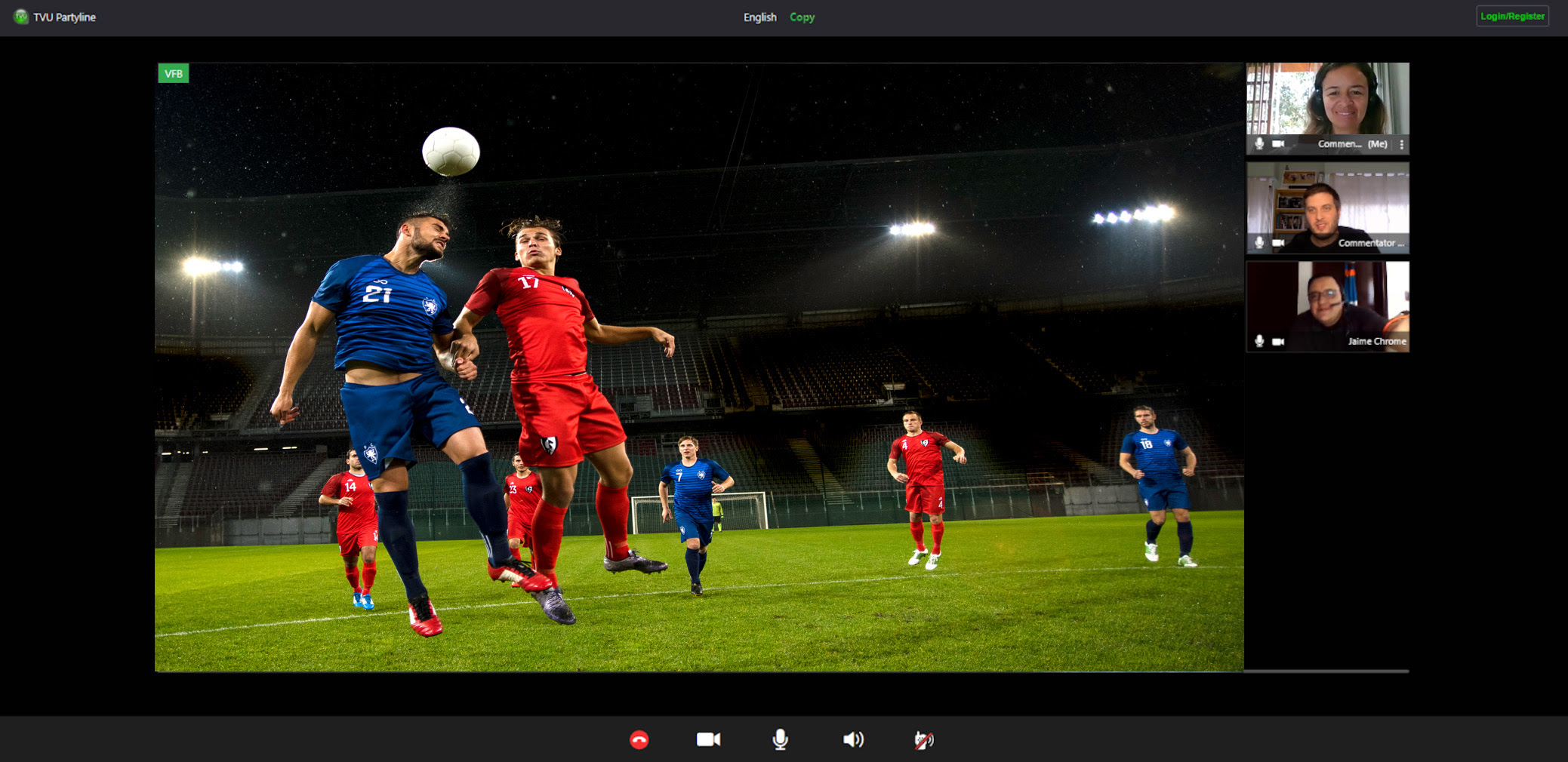Industry’s Move to Cloud Masks Complexity
Vendors stress importance of IP management tools and services

LONDON—Adoption of cloud and IP-driven solutions for video production has rocketed as media operations have had to adapt to remote collaboration workflows to protect their teams and ensure production continuity. But “cloud and IP” are catch-all phrases that disguise a myriad of complexities that must work differently to the pace, strategy and existing models of individual businesses.
The merits of IP and cloud are well understood and the acknowledged end game, but getting there is “a journey of many paths,” as someone once said, and not of a little faith during which broadcasters have to be prepared to fail. But at least with cloud they can fail fast and move on.
AT THE SPEED OF LIGHTNING
It’s also why vendors talk of wanting partnerships with broadcast clients and that they will evolve solutions and services together.
Here’s Avid’s Director of Product Marketing Raul Alba, “As a result of the pandemic, large organizations are increasingly incorporating cloud at the early stages of their planning.”
TVU Networks’ Senior Director of Product Strategy, Luc Comeau believes the transformation and transition into IP and cloud-native models have “circumvented on-premise dependencies and legacy hops, because of all the efficiencies you’re gaining in the pipeline. This is all moving at lightning speed.”
While post-production teams are already used to working remotely, arguably TV workflows and certainly live TV cannot be fully moved to the cloud yet.
The professional video industry's #1 source for news, trends and product and tech information. Sign up below.
A case in point is Avid | Edit On Demand which makes all the company’s post-production tools available as a service. “It’s addressing the need to have geographically dispersed teams collaborating to create high-quality content,” Alba says. “We’ve had feedback from Hollywood editors who cannot tell the difference between Avid | Edit On Demand that can be connected to a cloud service miles away and Media Composer on their own computer.”
When considering the next evolution of IP-based video transport in the cloud, Primestream asks us to think of a browser as a “tuner” that works in much the same way as traditional RF-based tuners. Instead of sending a video signal on an RF frequency, you’re sending it over the internet—but without the high-power antennas and cumbersome field equipment needed for RF transmissions.
“That said, one of the key challenges of video production in the cloud is management,” says Namdev Lisman, Primestream executive vice president. “Producers need to be able to switch, manage, and control IP streams just as they’re used to doing with an RF-based network operations center [NOC] in an SDI-based environment.”
Consider a conventional production, in which the NOC controls the routing switcher and manages camera signals and calibration, color correction, embedded audio, and other functions such as chroma-keying remote sources without artefacts.
“Until now, the ability to switch and manage IP signals in the same manner has been missing,” Lisman says. “An IP NOC has been the missing piece of cloud video adoption.”
Primestream says its IP NOC answers these signal management challenges. It consists of the company’s Media IO for IP-based signal acquisition and Xchange Media Cloud for asset management. Since the IP NOC is cloud-based, it can acquire signals from unlimited baseband or non-baseband sources using the usual protocols (SRT, WebRTC, HLS, RTSP, etc.), and then output the signals via an Ethernet switch.
Explains Lisman, “Remote operators are able to log into the IP NOC for live multicamera monitoring, real-time transcoding to house formats, live editing, and finally publication, distribution and/or retransmission. Since MAM is a core component, remote production teams are able to access all the video assets they need from any location and at any time.”
In broader terms, the IP NOC enables video operations to leverage the power of IP to produce programs from anywhere and transmit them instantly anywhere. “Gone are the days when global signal transmission required multiple satellite hops, sometimes up to seven or eight, resulting in sometimes-unacceptable latency,” Lisman asserts.
NO PLACE LIKE HOME
Infrastructure management is also the focus at Lawo which recently launched its "Home" IP configuration system. “In today’s IP project implementations, the physical build and cabling is only half of the way. The other half consists of configuration,” says Axel Kern, Lawo’s senior product manager. “Home significantly increases efficiency in setting up IP system installs.”
Built on “cloud-ready microservices architecture” the software enables broadcasters to connect, manage and secure networked production setups over IP ST 2110 from the ground up. Of course, it also provides centralized access and control for all Lawo gear.
One challenge it's designed to solve is registration and discovery via NMOS. It enables automatic plug and play discovery of IP audio and video devices, which are registered with their name, location, status and type. This applies not only to Lawo’s but to third-party kit as well.
Home is built on a “cloud-ready microservices architecture” which Lawo defines as built to run detached from hardware constraints. This does not automatically mean that services must be outsourced to an external service provider whose meter is running 24/7.
“With Home, the cloud starts on your campus, private and locally, on COTS hardware,” Kern said. “The Home platform is designed as functional blocks that provide microservices, which are self-contained and supply functionality to operators or other services.”
One of the pitfalls that vendors marketing cloud-native products like to point out are vendors touting cloud-enabled products. They aren’t quite the same thing.
“Cloud-enabled usually means that whoever has that cloud-enabled service hasn’t completed the transition to a fully cloud-native approach,” suggests TVU’s Comeau. “They have connectivity to cloud resources but remain reliant on premise or a physical dependency while still providing connectivity to cloud resources.”
In a cloud-native scenario, by contrast, there’s zero dependency on on-premise, and the user experience can be from any device; a browser is all you need.
“We’re very focused on removing the reliance on buildings and people’s location, putting the focus more on the creative’s talent as opposed to the skills and hardware used to support those skills,” Comeau says. “It’s akin to editing a Google Doc wherever you are and collaborating with your colleagues wherever they are. Take that concurrent, real-time editing process and apply that to a live cooking show, where you have multiple talent and creatives in different studios, or in their homes with a guest somewhere else.
“We are bringing that same level of live content production natively to the cloud and applying the common concepts of the tech world to the broadcast world. It’s about breaking down these barriers where you’re no longer locked down by a legacy approach.”
With TVU’s new cloud-based TVU Remote Commentator, producers can add real-time, synchronized and broadcast-quality audio commentary with on-air talent remotely. The cloud-based multicamera live production platform and its cloud-based TVU Partyline “people router” allows producers to run virtual events over IP.
ELASTICITY AND RESILIENCY
One of the drivers to cloud is the need to scale up and reach more audiences, in targeted fashion, as consumption proliferates in line with new content platforms. With benefits like scale, reach, flexibility, and more, Grass Valley firmly believes everybody in the industry needs a “cloud” strategy.
“Cloud-based technologies built on cloud-native applications [like production switchers or clip players in the cloud] benefit from improved efficiency of compute/storage and automated scaling,” argues Marco Lopez, general manager, live production.
These technologies offer what Lopez terms “true elasticity and enhanced resiliency” by enabling models that use multiple availability instances which a number of data centers offer by all cloud providers. This elasticity, he says, makes cloud-based workflows ideal for remote and live productions. “It provides more flexibility while aligning with the OPEX models most managed service production companies offer to their customers,” he said.
GV’s cloud platform GV AMPP (Agile Media Processing Platform) now features several applications including master control and playout and recently the company debuted a SaaS version of the K-Frame switcher engine on AMPP that provides a hybrid transition to cloud-based video production.
“The functionality of the recently launched AMPP Audio Mixer further demonstrates what is possible in the cloud,” Lopez says. “It’s a true, cloud-native, microservices-based application that can interact with audio flows from sources within AMPP or external third-party sources, such as the NDI software standard.”
Telestream points to the changing skillsets of the media teams implementing the workflows. “There are changes occurring in who manages the operations of the media companies,” says Marketing Director Alan Repech. “More and more there is core competency in software development able to use API-first software to be flexible in their workflow deployments.”
Telestream’s new Cloud Transform enables development teams to build transcoding and media processing workflows without having to understand the intricacies of the many file formats in use worldwide.
“Transform is meant for both traditional media companies such as broadcasters and post-houses, as well as relative newcomers such as social media platforms and app developers,” Repech says. “Traditional broadcasters are looking towards an architecture that shifts some or all of their existing workflows into the cloud to take advantage of the massive scalability and cost-effective SaaS solutions to be found there.”
Truth is, as large media enterprises scale up or shift load into the cloud, in addition to flexibility and security, they need a foundation of technology they can trust to meet their demanding and detailed specifications.
Adrian Pennington is a journalist specialising in film and TV production. His work has appeared in The Guardian, RTS Television, Variety, British Cinematographer, Premiere and The Hollywood Reporter. Adrian has edited several publications, co-written a book on stereoscopic 3D and is copywriter of marketing materials for the industry. Follow him @pennington1



